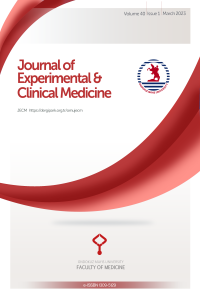Abstract
References
- Castellvi AE, Goldstein LA, Chan DP. Lumbosacral transitional vertebrae and their relationship with lumbar extradural defects. Spine (Phila Pa 1976) 1984; 9(5): 493-495.
- Bertolotti M. Contributo alla conoscenza dei vizi di differenziazione regionale del rachide con speciale riguardo all assimilazione sacrale della v. lombare. Radiol Medica 1917; 4: 113-144.
- Farshad-Amacker NA, Herzog RJ, Hughes AP, Aichmair A, Farshad M. Associations between lumbosacral transitional anatomy types and degeneration at the transitional and adjacent segments. Spine J. 2015; 15(6): 1210-1216.
- McGrath K, Schmidt E, Rabah N, Abubakr M, Steinmetz M. Clinical assessment and management of Bertolotti Syndrome: a review of the literature. Spine J. 2021; 21(8): 1286-1296.
- Vergauwen S, Parizel PM, van Breusegem L, van Goethem JW, Nackaerts Y, van den Hauwe L et al. Distribution and incidence of degenerative spine changes in patients with a lumbo-sacral transitional vertebra. Eur Spine J. 1997; 6(3): 168-172.
Abstract
To evaluate the frequency of lumbosacral transitional vertebrae (LSTV) on MRI in patients with backpain and clinically suspected of sacroiliitis. Sacroiliac MRI of patients who had backpain and were clinically suspicious for sacroiliitis between November 2021-March 2022 were retrospectively analyzed from the hospital database by two different radiologists. LSTV cases were identified and subgrouped according to Castellvi classification. Presence of sacroiliitis, degeneration and /or herniation of cranial segment intervertebral disc, facet joint hypertrophy, coxarthrosis and psoas atrophy were recorded. In cases where radiologists were in conflict, consensus was made. Between November 2021-March 2022, 614 sacroiliac MRIs were obtained and 81 (13%) had LSTV. Fifty-nine patients were female (72.8%). Mean age was 43.4. The most common identified LSTV was type 1a (n=30, 10 right-sided, 20 left-sided). Sacroiliitis was significantly more common in younger patients (p=0.04) and in males (p=0.009). Disc degeneration, disc herniation, facet joint hypertrophy and psoas atrophy increased significantly with age (p=0.007, p=0.001, p=0.002 and p=0.013 respectively). No correlation was found between gender or presence of sacroiliitis and any type of LSTV.LSTV may present with backpain and should be considered in patients where sacroiliitis is clinically suspected. MRI is a useful tool to identify other accompanying pathologies in these cases.
Keywords
back pain lumbosacral transitional vertebra sacroiliitis disc degeneration spine transitional anomalies
References
- Castellvi AE, Goldstein LA, Chan DP. Lumbosacral transitional vertebrae and their relationship with lumbar extradural defects. Spine (Phila Pa 1976) 1984; 9(5): 493-495.
- Bertolotti M. Contributo alla conoscenza dei vizi di differenziazione regionale del rachide con speciale riguardo all assimilazione sacrale della v. lombare. Radiol Medica 1917; 4: 113-144.
- Farshad-Amacker NA, Herzog RJ, Hughes AP, Aichmair A, Farshad M. Associations between lumbosacral transitional anatomy types and degeneration at the transitional and adjacent segments. Spine J. 2015; 15(6): 1210-1216.
- McGrath K, Schmidt E, Rabah N, Abubakr M, Steinmetz M. Clinical assessment and management of Bertolotti Syndrome: a review of the literature. Spine J. 2021; 21(8): 1286-1296.
- Vergauwen S, Parizel PM, van Breusegem L, van Goethem JW, Nackaerts Y, van den Hauwe L et al. Distribution and incidence of degenerative spine changes in patients with a lumbo-sacral transitional vertebra. Eur Spine J. 1997; 6(3): 168-172.
Details
| Primary Language | English |
|---|---|
| Subjects | Health Care Administration |
| Journal Section | Research Article |
| Authors | |
| Early Pub Date | March 18, 2023 |
| Publication Date | March 18, 2023 |
| Submission Date | September 12, 2022 |
| Acceptance Date | November 26, 2022 |
| Published in Issue | Year 2023 Volume: 40 Issue: 1 |
Cite

This work is licensed under a Creative Commons Attribution-NonCommercial 4.0 International License.


